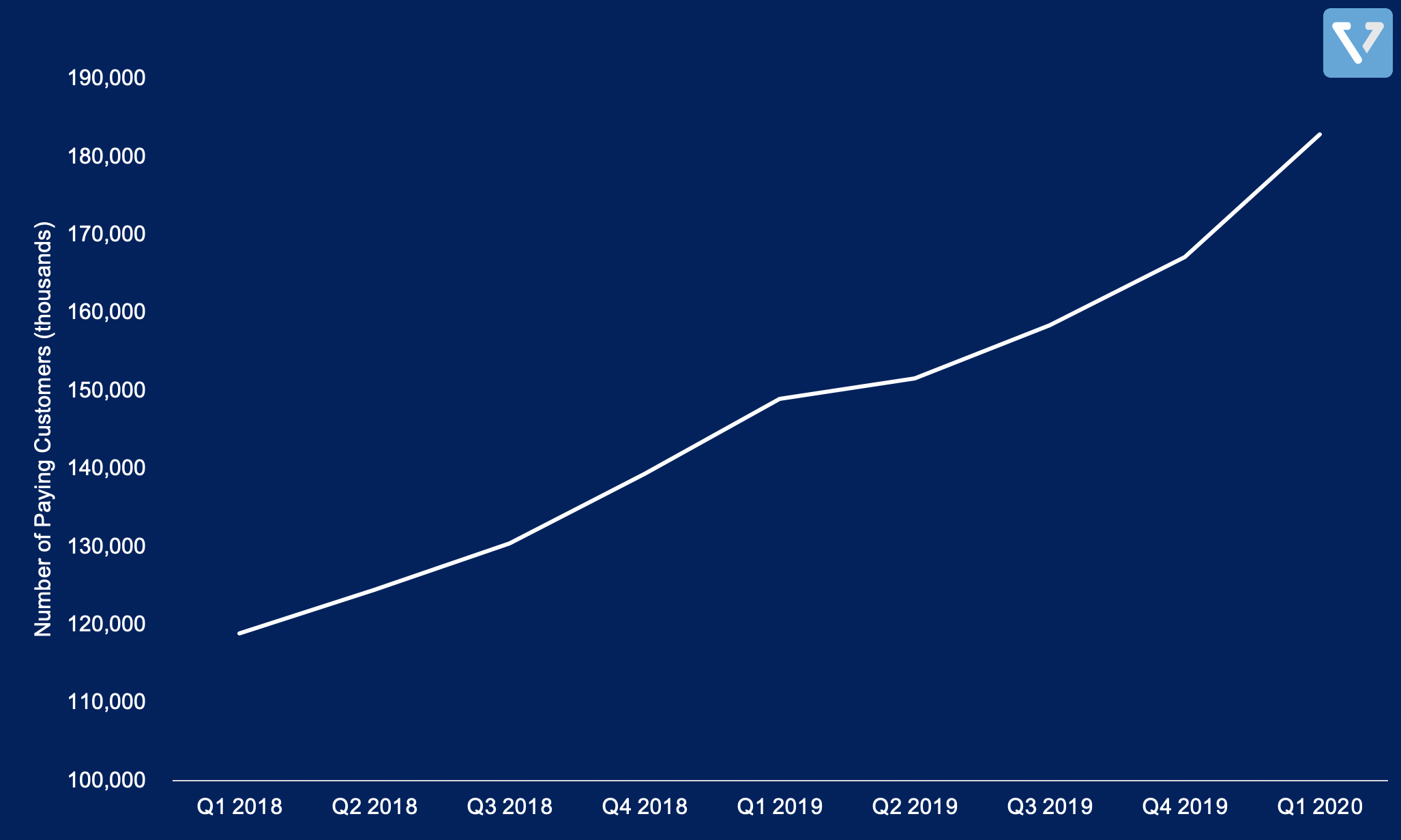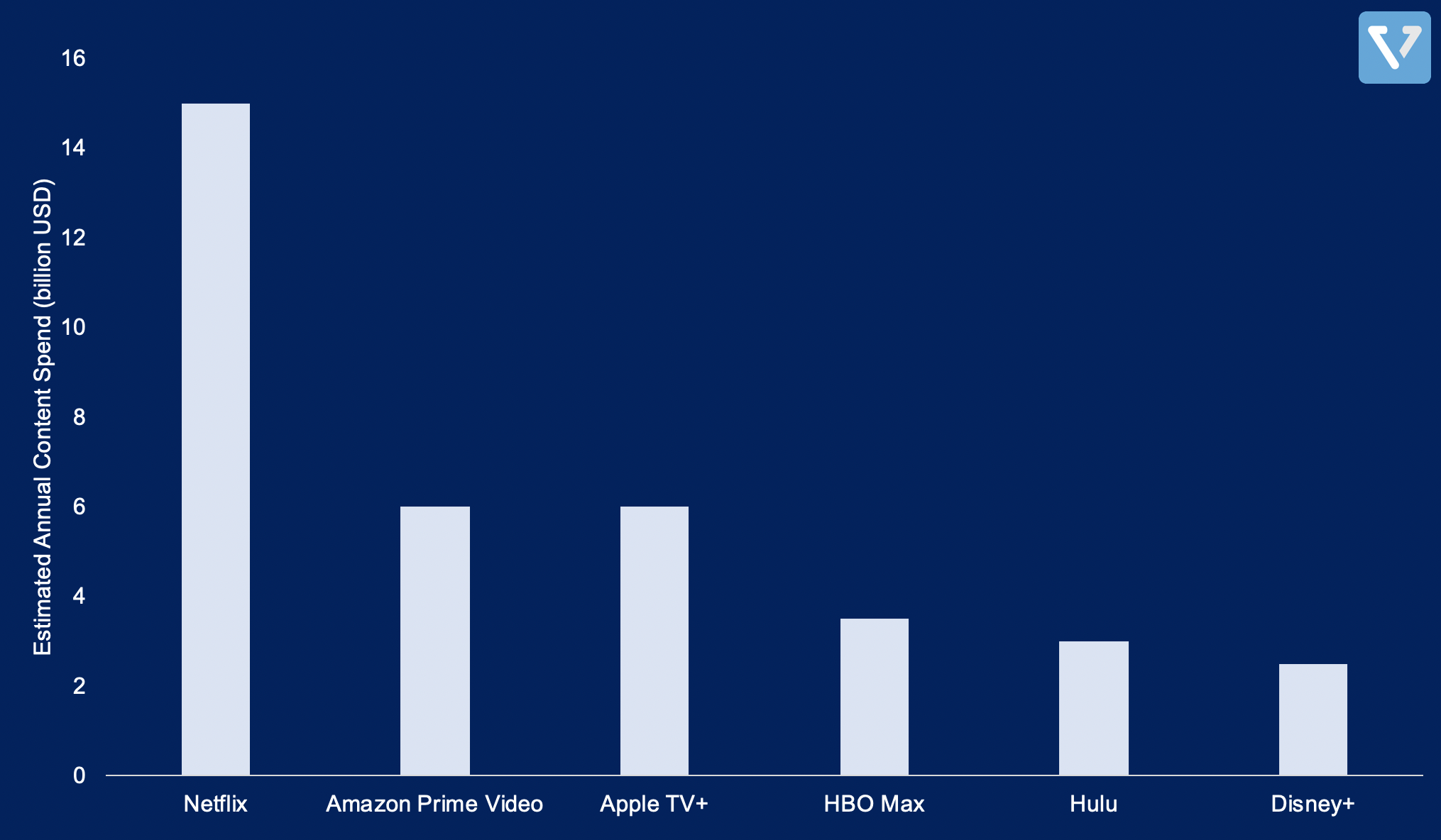Netflix’s Q1 earnings
As predicted, Netflix saw strong subscriber growth of 15.8 million (more than double the 7.2 million expected) in Q1 2020 due to the global lockdown. The impact of this growth towards revenue has not yet been fully realized, however, as the company saw most of its subscriber gains in March 2020 (the last month of the quarter). Here are some key highlights from the earnings report:

Figure 1: Netflix’s quarterly paying subscribers growth
- Netflix saw strong growth with the global lockdown – the number of subscribers increased beyond expectations. It now has more than 180 million paying subscribers globally (Figure 1). The lockdown pulled forward subscriber growth substantially, although this is unlikely to continue. The company believes that the growth rate will decline after the lockdown period ends. Intuitively, if being forced to stay at home for 6 – 8 weeks does not compel you to sign up for the service, it is unlikely that you will do so after the lockdown has been lifted.
- Despite the stronger growth, revenue came under analysts’ estimates. The global recession strengthened the US dollar compared to other emerging market currencies. Since Netflix charges subscription on a constant foreign currency basis, international revenue growth declined on a USD basis.
- Global lockdown has halted content production worldwide. This is true for Netflix and its competitors. Fortunately, the production of content to be released this year is largely completed. Therefore, Netflix’s release schedule will not be affected in 2020. The company has about a 1 year lead time from when the investment is made to when shows are released on the platform. This is why the company operates with such negative free cash flow. Nonetheless, because of stoppage of production, Netflix ended up spending less cash this year, giving it extra financial flexibility (it has US $5.2 billion dollars in cash and US $750 million in untapped credit lines).
This stronger than expected growth has been priced in by investors (trailing twelve month P/E is 86X).
Nonetheless, acceleration of subscriber growth will only strengthen Netflix’s structural advantage. As we wrote about before, Netflix can afford to outspend its competitors to create content. Since it has the largest user base, it can spread out the fixed cost to its 182 million subscribers. Netflix spends about 2 – 3X more on content as compared to its competitors (Figure 2).

Figure 2: Estimated annual content spend of the different streaming providers. Estimate taken Source
Alphabet (Google) and Facebook – a tale of two earnings
These two companies are duopoly in digital advertising. There are key similarities in their advertising driven business:
- Both have self-serve ad platforms where advertisers can create and start deploying ad campaigns easily. This ease also means that it’s very easy for advertisers to stop when business is interrupted
- The pricing of ads on the platform (e.g. how much advertisers have to pay for a unit of ad) is determined by an auction system, This means, the more competitors there are, the more costly it is for the advertiser, which means more revenue for both Facebook and Google.
Both companies saw strong growth in January and February, and both observed a decline in March. Despite that, Facebook and Google saw stability in its revenue going into April. This is because both companies have strong components of direct advertising in their revenue.
Generally, there are two types of advertising:
- Brand advertising – where advertisers place ads so that you are familiar with the brand, with the expectation of future pay off (future purchase). For example: Mercedes Benz shows an ad so that you may consider the brand for your next car purchase.
- Direct advertising – where advertisers serve you ads that convert directly to a purchase. This type of advertisement immediately translates to revenue and is much easier to track.
In times of recession, brand advertising becomes less important and gets turned off, and since both Facebook and Google have easy-to-use ad platforms, the ad revenue from this type of advertisement plummeted quickly. Meanwhile, direct advertisement is tied to incoming revenue and is more resistant to economic conditions. As such, both Facebook and Google saw direct advertising spend stabilize their revenues coming into the first weeks of April. Investors saw this as signs of what is to come – they expect stabilization of revenue to continue into Q2 2020. As a result, shares of both companies went up after the earnings reports were released.
Nonetheless, economists expect the global GDP to contract, and since GDP growth highly correlates with advertising spend, it is likely advertising as a whole will decline at least in the short and medium term.









